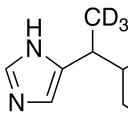Ultrasound-guided percutaneous nephrolithotomy for the treatment in patients with kidney stones.
Parole chiave
Astratto
BACKGROUND
In this study, we aimed to explore the effect of ultrasound-guided percutaneous nephrolithotomy (UGPN) for the treatment in patients with kidney stones (KS).
METHODS
We randomly assigned 86 patients with KS to a UGPN group or a control group, each group comprising 43 patients. Patients from the UGPN group underwent UGPN whereas those from control group underwent fluoroscopic-guided percutaneous nephrolithotomy (FGPN). The primary outcome included the stone-free rate. Secondary outcomes included complication rates, operative time, and length of hospitalization.
RESULTS
UGPN did not show better efficacy than the FGPN procedure in decreasing stone-free rate (UGPN group 79.1% vs control group 69.8%, P = .45), operative time (UGPN group 108.4 ± 31.7 minute vs control group 113.2 ± 34.5 minute, P = .50), and length of hospitalization (UGPN group 2.7 ± 1.3 days vs control group 3.1 ± 1.5 days, P = .19). Additionally, no complications, except fever (UGPN group 4.7% vs control group 9.3%, P = .41) and hemoglobin slightly reduced (UGPN group 7.0% vs control group 11.6%, P = .46) were noted in patients from both groups in this study.
CONCLUSIONS
To summarize, we demonstrated that both UGPN and FGPN techniques showed similar efficacy and complications when used for the management of KS.



